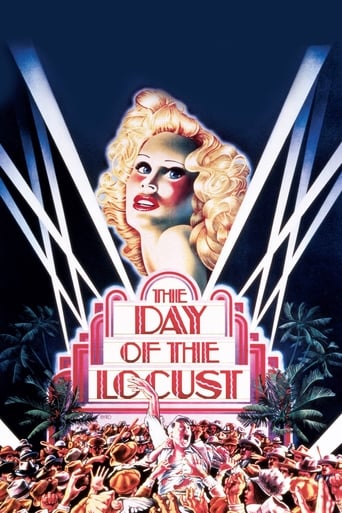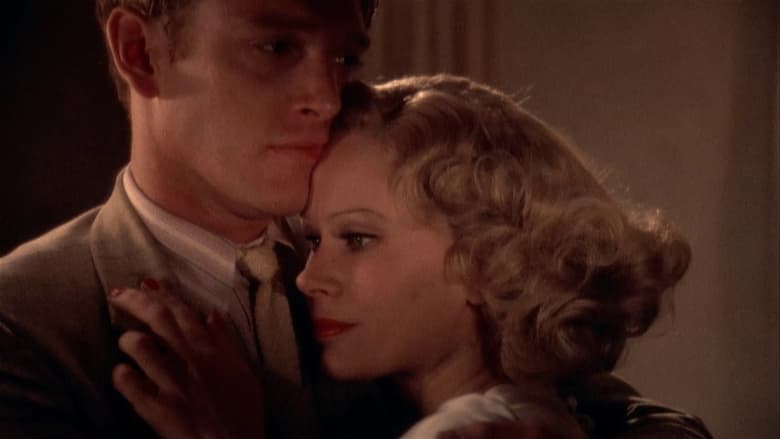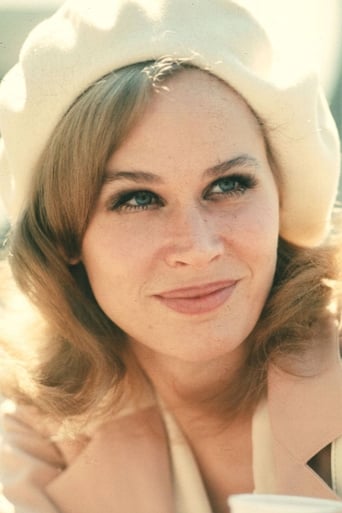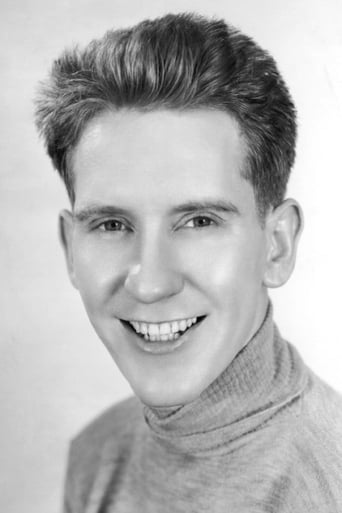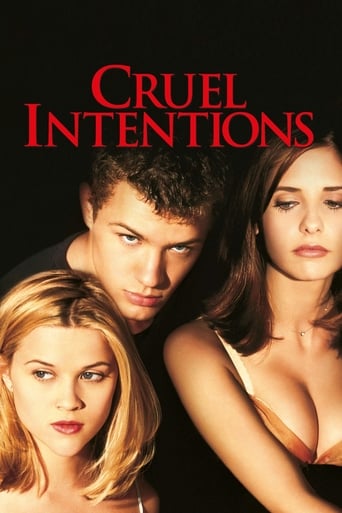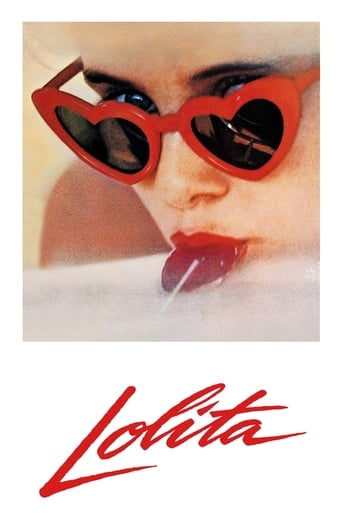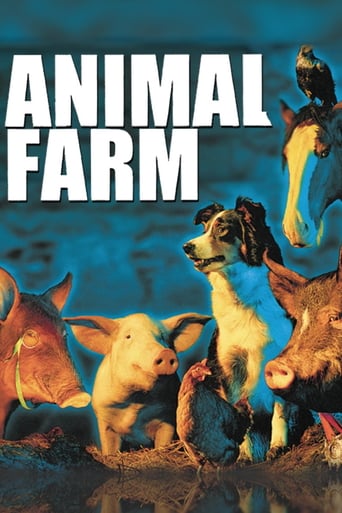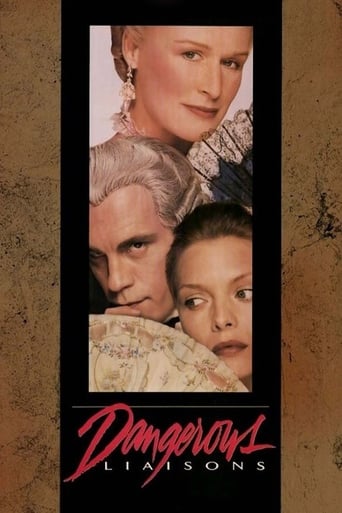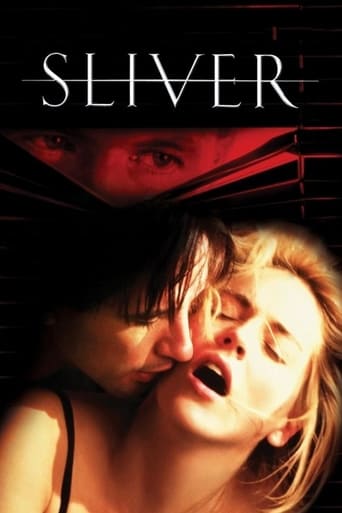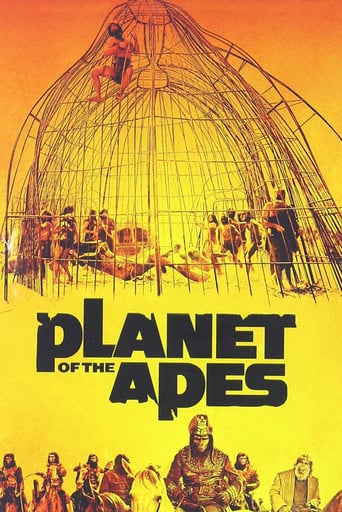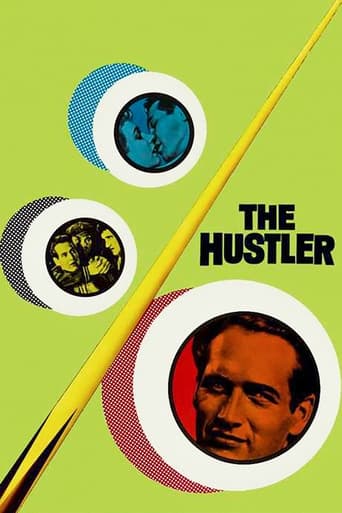The Day of the Locust (1975)
Hollywood, 1930s. Tod Hackett, a young painter who tries to make his way as an art director in the lurid world of film industry, gets infatuated with his neighbor Faye Greener, an aspiring actress who prefers the life that Homer Simpson, a lone accountant, can offer her.
Watch Trailer
Cast


Similar titles
Reviews
For all the hype it got I was expecting a lot more!
A Masterpiece!
If the ambition is to provide two hours of instantly forgettable, popcorn-munching escapism, it succeeds.
The film makes a home in your brain and the only cure is to see it again.
I wasn't going to write a review but felt guilty that someone might read all the film school gushing and watch this dreck. I'm not a young man and I regret wasting 2½ hours just to learn a lesson.Very good acting, great characterization, loathsome characters (which I like) and an excellent premise, but just a premise. We unfortunate viewers are bashed over the head with the idea that people in Hollywood are bad. Over and over and over for two hours and twenty four minutes. This may be a spoiler, but how can I spoil something that rotted before the novel's author sat down at his Corona portable? The over the top ending is not needed to reinforce Hollywood bad- it is needless violence- not even entertaining violence. I've said this before and fear I will say it again- you can't act your way out of a bad script. Don't watch this movie, if only to learn from its mistakes. Find a copy of Carey McWilliams' Southern California Country (1946). His book covers the thinking behind Hollywood and its neighbors in greater depth and with wit. Lesson learned for the short remainder of my life- no more 1970s dramas except for thrillers.
As if they were mocking the love of everything 20's, 30's and 40's on TV, Broadway and the movie screens, the writers of this screenplay tear apart the legend of movie's so-called "Golden Age". Karen Black, fresh from flying the plane in "Airport '75" (and free from that knife-wielding monster in "Trilogy of Terror"), is a blonde bombshell in 1933 Hollywood who appears in a 1937 Eddie Cantor movie called "Ali Baba Goes to Town" and is upset when most of her one scene is deleted. She selfishly leads lovers along until she meets Homer Simpson (Donald Sutherland), a not-so-cartoonish loner who saves her father (Burgess Meredith) during an attack of exhaustion. Black gives a really mesmerizing performance, especially in scenes where she deals with her father's death and her own insecurities, but ultimately her character is too unlikable.Billy Barty, who in 1933 was making cameos in Busby Berkley musicals, plays a troubled neighbor, and Geraldine Page has a dramatic one-scene cameo as an Aimee Semple McPherson type evangelist. Vintage 30's music, like the previous year's "The Great Gatsby", provides the only real nostalgia since the theme is actually dark and depressing. Burgess Meredith's funeral sequence is interrupted at the Hollywood Cemetery when it is announced that a movie star named Mr. Gable has just arrived. The attitude is satirical but inappropriately so, since the comedy is actually pretty mean spirited. A genuine 30's atmosphere is felt, but this is is not a pretty look at Tinsel Town. Audiences who expected "The Sting" or even "Gatsby" got stung here, and I'm sure many walked out. There is a violent scene involving an attempted rape over jealousy between two men organizing a cock fight. Backstage scenes at Paramount where a film about Napoleon is being shot while everything goes wrong seem genuine, although "College Swing", advertised in the background, wasn't made until several years after this took place. But get a load of "Gilligan's Island"'s Natalie Schafer as a Hollywood madam who shows porno at her parties, a drag queen who performs Dietrich's "Hot Voodoo", and a Shirley Temple like performer so hatefully obnoxious that she (?) makes Temple's rival Jane Withers seem like an angel.If director John Schleshinger's goal was to create a film audiences wouldn't soon forget, he reached his goal. Technically (especially visually), it is outstanding. However, for me, it was not in the way he intended to. This moves past the darkness of his previous nostalgic film "They Shoot Horses, Don't They?", taking tastelessness to a new level that only seemed appropriate in 1975 in John Waters' underground movies.
***SPOILERS*** Based on Nathanael West's 1939 short story "Day of the Locust" the film lives up to all it's hype even though it was hardly a smashing box office success back in 1975 when it was released. The movie starts out with young Harvard educated Tom Hackett, William Atherton, trying to get a job at a big Hollywood studio as one of its graphic and art designers. Living at the San Bernardino Arms Tom runs into a bunch of people who are also looking to make it big in Tinsel Town but keep running into dead ends. It's there where Tom meets aspiring actress Faye Greener, Karen Black, who's trying to break into the movies in her feeling that the grass is greener on the other side, Tensile Town, then where she's now living.Tom in fact does get himself a good paying and prestigious job at Paramount Studios as a graphic designer but is somehow stuck on the part time actress, who's lucky to get cameo roles in the movies, Faye Greener who for some reason doesn't take advantage of Tom's position in getting her better roles. Faye as it turns out is into wild partying with the rough crowd that includes a number of Mexican cock fight enthusiasts which turns the very genteel and sensitive Tom off. In fact Tom himself gets corrupted by Faye's lifestyle in losing himself when he gets drunk and high on pot before a cock fight that gets him so horny and heated up that he almost ends up raping her.There's also Faye's father the washed up vaudevillian song & dance man Harry Greener,Burgess Meredith,who's really pushing his luck, and weak heart, as a door to door snake oil salesman who what seems like hasn't made a single sale during the entire duration he's in the movie. As Harry's luck and heart starts to run out Faye in desperation tries to get him back to health by going to see faith healer Big Moma or Sister, Geraldine Page, at one of her sermons. This in fact does help Harry out a bit but before you know it his heart gives out from all the excitement and he dies halfway through the film.The person who really steals the acting honors as well as the hearts of all of us watching the film is that sad eyed and repressed, in life love and everything else, dufus the homely and knuckle crunching Homer Simpson, Donald Southerland. Homer a transplanted Mid-Westerners has moved to the Sunshine State to live out his last years in peace and quite without expecting much excitement in doing that. it's when Homer runs into Faye who seems to have some feelings for him that his sad & sorry life starts to lighten up a bit. Faye just takes advantage of the sad sack by leading him on in that she's in love with him where at the same time is having it on with almost every man, except Homer & Tom, in the vicinity between San Bernardino to Beverly Hills.The end comes when a very naive and heart sick Homer finds out that his live in companion Faye, who has no sexual relation with him at all, has been cheating and making a complete and total fool of him which causes Homer to have an emotional breakdown. This causes a heart broken Homer to pack up and head for who knows where who then runs into the bratty 12 year old Adore Loomis, Jackie Earl Haley, who's been unmercifully teasing the poor guy since the movie started. It's when Adore pushed the wrong button, by striking him in the head with a rock, that Homer finally lost it and that set the stage for the movies fairy climax. That all happened at the grand primer and opening of Cecil B. DeMill's latest multi million dollar spectacular cinema epic "The Buccaneer". By the time that the movie "Day of the Locust" was finally over it wasn't "The Buccaneer" that everyone remembered but the riot that Adore sparked which in fact ended up burning down all of Tinsel Town!The 144 minute movie kept your interest with a number of weird sub-plots and strange characters thrown into it but that was nothing compared to it's final ten or so minutes when the earth, or Hollywood, caught fire in one of the most shocking and realistic disaster scenes,in what's not considered a disaster movie, in all of motion picture history! And that's without even the used of computer enhanced technology! Director John Schesinger staged the final riot scene much like the real life, and death, notorious April 9th 1948 "Bogotazo" that in a 24 hour period lead to the deaths and injuries of between 3,000 to 5,000 people and burned downtown Bogata Columbia to the ground.
I saw this movie, at a cinema, when it was released. I came away from it, horrified and subdued. Now, thirty-five years later, my assessment hasn't change: this is one of the most horrific stories ever to hit the screen and, in my opinion, vies with Mulholland Drive (2001) as the definitive statement about Hollywood - the Dream Factory as someone once said.What makes this story all the more horrible is that some of the fictional characters were based upon real people. Hence, one can only speculate the extent to which some events have a basis in fact.The story, published in 1939 from the mind of Nathanael West (ex-Hollywood screen writer), pulls no punches about the trials of Faye Greener (Karen Black, in her finest role, as a green-horn actress) to claw her way into the glitzy world of Hollywood, showing in vivid detail how would-be stars – both sexes – prostitute themselves, literally and figuratively, in their bids for stardom. In sum, the story is about how people sell themselves, and not only in the business of making movies. To that extent, it's also a modern metaphor for all the stories about how all of humanity sells itself to the devil of money everyday, in order to survive.The difference with the rest of humanity, of course, is that we can keep our sins private.So into this mix of horror enters naïve Tod Hackett (William Atherton) as an aspiring art director to a Hollywood mogul. He lives in the same apartment block as Faye and is smitten; but he makes no headway, because she's on the make for somebody to make her a star. So Tod – arguably West's alter ego for the story – is reduced to being an observer to all that transpires between Faye and all those she encounters. One of whom is Homer Simpson (Donald Sutherland), a mild-mannered bachelor and accountant who just likes to mind his own business; in today's psychological parlance, he'd be labeled as extreme passive-aggressive personality type. So, like Tod, he's also bowled over one day when he meets Faye through his association with Faye's father, Harry Greener (Burgess Meredith, in his finest role), a has-been vaudevillian who does old tricks as he goes about as a door-to-salesman, in the Hollywood hills, a pathetic caricature of what all actors must do to survive.And, like the passing parade that begins the story, the viewer, with Tod, goes on to meet a succession of unsavory dead beats, in high and low society, who pull and push at poor Faye to do their bidding, all with the promise of rich dreams and dreams of riches. Faye is a lost soul, however, devoured by desires she can't stop or ignore: but she can do what it takes – she can hack it. But can Tod? Well, yes and no, as the viewer learns.For my money, the most unsavory of all characters, and stunningly played, is the child actor Adore (Jack Earle Haley) who continually torments Homer at and near his home, and who meets Homer for the last time at a back street, off Vine, where a Hollywood premier opening is, ironically, the last major scene in this movie. Anybody who sees this movie will forever remember that scene between Homer and Adore. Not to be forgotten also is Adore's utterly obnoxious and evil mother, played by Gloria LeRoy (I think).But it is the transformation of Homer in that back street – infatuated with Faye and tormented by his inhibitions laid bare by a child – that is, without doubt, one of the finest pieces of acting ever. Why Donald Sutherland didn't get even a nomination is beyond belief.(As an aside, I can't help wondering whether the developers of the long-running TV cartoon of The Simpsons used the name Homer Simpson as some kind of back-handed reference to Locust.) The mise en scene, photography and soundtrack are exemplary. The direction by Schlesinger is so astute, it's invisible to this viewer. And the script faithfully follows the story to the last line of the novel; the only significant exception is the omission of the back story about Homer, before he came to Hollywood.Has much changed in Hollywood since 1939? Has human nature changed? Whatever your opinion, do see also Mulholland Drive (2001), David Lynch's take on the same basic story: young girl wants to be in pictures and gets what she wants – or does she?If Locust sucks you in, Drive will swallow you whole into an even worse nightmare. Both movies have my highest recommendation. Enjoy.

